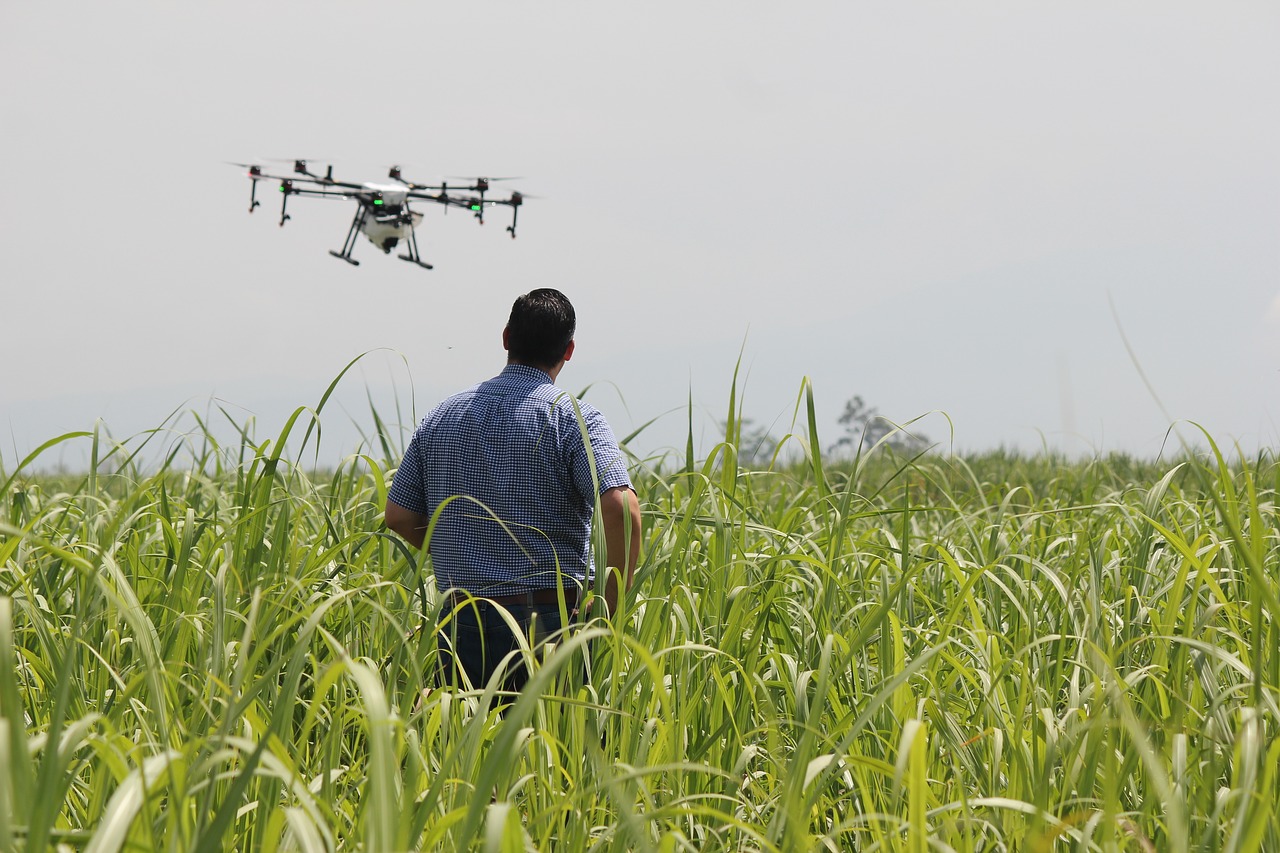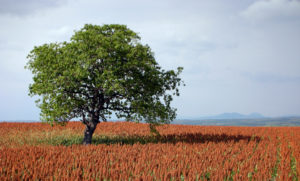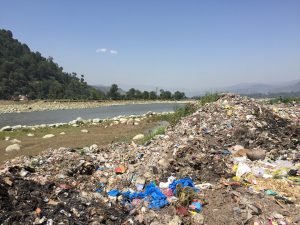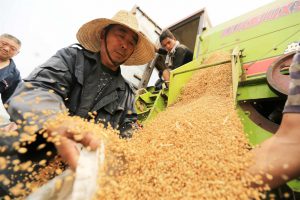A drone flies over a potato field in Sinaloa, Mexico and informs a farmer 30 kilometres away that the humidity of the air around his crops is low. Meanwhile, a computer in San Diego, California, processes the data and calculates how much water the potatoes need.
In another city, a farmer sells his strawberries on the international market with the support of blockchain – an electronic logbook tracking the fruit from field to dining table.
This is Agriculture 4.0 – a new age of food production that harnesses digital technology and the Internet of Things to cater more precisely to the needs of crops, farmers and consumers. Advocates of Agriculture 4.0 believe it will solve the food security problems of the future.
Over the last decade, machinery and biotechnology companies have been collecting accurate weather predictions through soil, moisture, plant and fungi data to expand their businesses and profits. When the computer and telecommunications industry entered the business, Agriculture 4.0 was born.
Multinational agricultural and biotech companies are fighting to develop this technology. But critics warn that without proper regulation this could result in a small number of companies acquiring power over decisions in global agriculture, at the expense of small producers.
Will agriculture 4.0 help feed future populations?
Approximately 800 million people currently suffer from hunger and by 2050 we will have to produce 70% more food to feed the world, according to the 2018 report Agriculture 4.0 by the information portal World Government Summit.
There is a huge potential to make the work more efficient, reduce agro-inputs, improve water use, and lower environmental impact
Agriculture faces prolonged droughts, soil impoverishment, decreased productivity, and the problem of more than a third of food going to waste.
“Even though it’s still not widely known, this fourth revolution in agriculture has been agile and its benefits are beginning to show, helping farmers maximise crop yields and developing ways to stop the epidemic of waste that destroys 45% of our supply,” explained Juana Rodríguez, vice principal of Ean University and a proponent of Agriculture 4.0 in Colombia.
Agriculture 4.0 in Mexico
In Los Mochis city in the Mexican state of Sinaloa, Mexican engineer Julio López and German economist Manuel Richter have created Luxelare, a platform helping producers to manage their crops using drone and satellite technology.
“There is a huge potential to make the work more efficient, reduce agro-inputs, improve water use, lower environmental impact and create more economic sustainability for the farmer,” Richter told Diálogo Chino.
Farmers can use satellite images to analyse the wellbeing of their crop, identify particular problems, such ase pests, and make better decisions on how to respond. With more precise weather information also available, they can anticipate heat waves and frost.
Farmers pay US$10 per year per hectare and have access to videos to learn how to use the technology. The platform already covers more than 200,000 hectares of corn, beans, wheat, potatoes, red berries, squash, carrots and onions in several Mexican states, and has about 500 users.
López and Richter are partly financed by insurance companies interested in the potential of their technology has to monitor risks. For example, insurers can use the satellite imagery to verify farmers’ claims of crop loss due to drought.
Big data use and transparency
In the case of Luxelare, collected data remains the property of the user. The creators do not sell or market farmers’ information without their consent, and say they only use the data to improve their services.
$20 billion
the amount spent by US companies on third-party data in 2018 (US$)
But many large companies that offer free services do sell user data. In 2018, North American companies spent almost US$20 billion on third-party data, 17.5% more than in 2017.
“Companies have a huge amount of data at their disposal. They can convert it into another business,” said Silvia Ribeiro, Latin America director of the Action Group on Erosion, Technology and Concentration (ETC).
“What lies behind this is the generation of new profits,” she added.
“Data is the new oil,” said Gabriel Cuéllar, an academic who specialises in artificial intelligence. “Companies today need data to make their systems more powerful. For example, Uber has not yet produced a profit, but they have produced an impressive collection of data and that makes the system more and more powerful.”
The positive side of big data in agriculture is that it can enrich software with large amounts of information that can help farmers become more effective at detecting pests, spotting failures in agricultural processes, or understanding market demands.
The question is not just who is collecting the data, but who can analyse it, and who wins or loses as a result.
Pat Mooney, of the ETC group, presents a bleak panorama of the future in his report Unsustainable Agriculture 4.0. Digitization and corporate power in the food chain. Mooney believes the concentration of power in agricultural data collection could result in a few companies controlling seed patenting data, pesticides, fertilisers and machinery, leaving little or no option for farmers and workers to choose what they buy – as widely happened with the multinational Monsanto.
Access to patents could be regulated by blockchains, making them inaccessible to small-scale farmers.
Big companies move forward
Chinese telecommunications giant Huawei, along with other US and European agricultural and computer corporation, has been drawn into the controversy over agriculture 4.0.
50,000
cows in Yinchuan were fitted with internet-ready devices in a 2017 pilot project
Huawei, together with China Telecom and Yinchuan Aotoso Information Technology carried out a pilot project in 2017 in the northwestern Chinese city of Yinchuan. They hung internet-enabled devices on some 50,000 cows to monitor their movements and health.
The so-called Connected Cows platform consists of putting collars or chips on the neck, legs or tail of each cow to measure pulse, temperature, peak fertility, and mobility. This helps farmers reduce birth mortality and improve productivity. The system can also be used on donkeys, horses, sheep and pigs.
You have to understand the new tools. They don’t threaten farmers, they empower them
Huawei wants to take Connected Cows from China to the Asia-Pacific and Latin America. In 2017, Telefónica and Huawei announced the creation of a laboratory in Chile to promote the technology in the region.
In countries like Costa Rica, Peru and Uruguay there are already local “Internet of Cows” services.
Currently, most of the technology uses 3G or 4G mobile technology but is expected to become much more efficient when 5G comes into play.
However, concerns over Huawei’s use of 5G have given rise to a worldwide debate about privacy. Even though the Chinese company has assured users that it does not and will not supply sensitive information to the Chinese government, tech experts say Huawei would be mandated by law to disclose personal information if requested. The Trump administration has banned Huawei’s products in the US.
According to Juana Rodríguez, there is also a significant hacking risk associated with Internet of Things devices.
“Imagine you have a moisture-measurement system installed in a flower crop, so when the humidity exceeds a certain threshold, fans activate and regulate the levels and maintain the crop,” said Rodríguez. “A hacker with a simple antenna and some knowledge on Sniffing, [similar to wiretapping], sends erroneous data to the humidity sensor, or even worse, to the devices in charge of controlling it, and can ruin an entire crop,” she explained.
This technology is expanding around the world. In May this year, Microsoft presented its “Farmbeats” package in Mexico, which offers a permanent monitoring system for the condition of soil, humidity and water.
Global Hitss, a subsidiary of Mexico’s América Móvil, owned by Carlos Slim, Mexico’s richest man, signed a similar agreement in April this year.
The good and the bad
The UN Food and Agriculture Organization (FAO) views Agriculture 4.0 in a positive light.
“The profile of the farmer is changing. It is more digital. You have to understand the new tools. They don’t threaten farmers, they empower them,” Dennis Escudero from FAO said.
The FAO has developed a guide for digital agriculture and an action plan for the development of these technologies as their users grows worldwide, which points to the challenges of illiteracy, and lack of connectivity which need to be improved in order to solve inequality of access.
With public control and national policies that support farmers’ networks, growers, fishers and ranchers, Agriculture 4.0 could be a real boost for small producers. Otherwise it could increase inequality between them and large companies.








